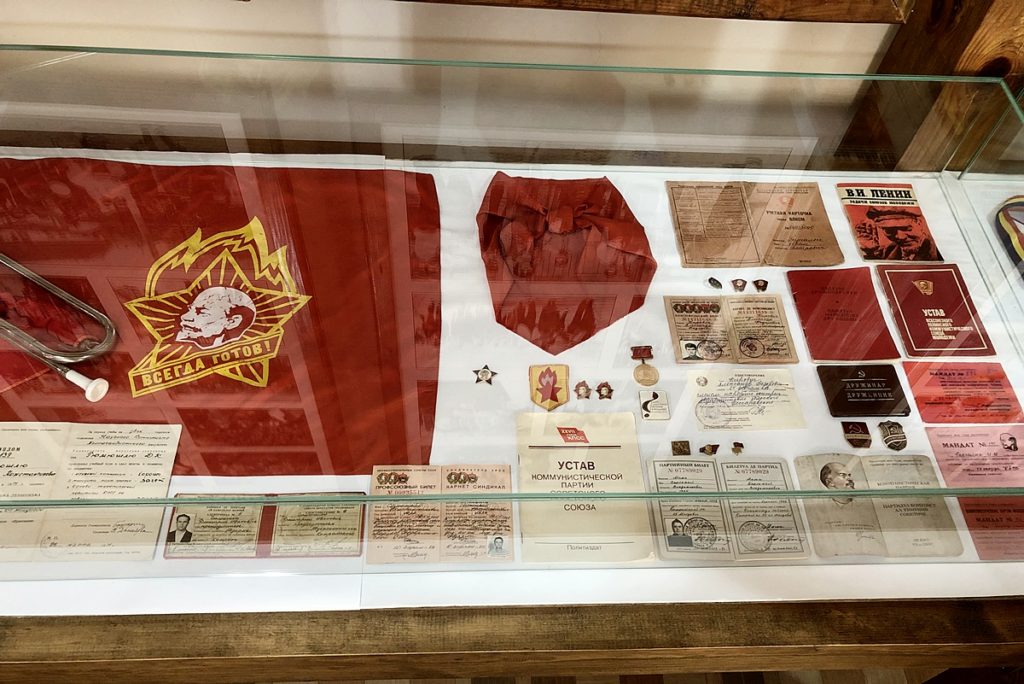The History Museum in Avdarma in Gagauzia is a private museum established by a family from the village of Avdarma which opened in 2011, two hundred years after the village was established. An introduction to the museum was provided by one of the brothers who established the museum. He had served in Afghanistan as a soldier and spoke in Russian which was translated into German. The museum told us about the history of this village and the lives and fate of its inhabitants. There is a memorial at the museum newly established to commemorate all those who died in the village on the 19th of October every year. This event represents an act of acknowledgment of all the loss and suffering that people had borne, it represented a kind of reconciliation with the past and a remembrance of all that had happened.
The village had a reputation for serving in armies for decades. Regardless of what war was going on, recruiters came to the village to recruit soldiers regardless of which side was fighting. The founders gave their best account of all 120+ families living in the village. The museum contains not only private letters, but also - official documents issued by the Soviets - like the forms informing about death of those who were sent to gulags, all exhibited in one of the cabinets. He said that seventy-five people had been deported from the village to the Gulags. This is one of the most comprehensive collections of this sort of documentation of one community. They used not only originals, but also facsimiles. Only in two cases of those deported were they unable to find any documents.
There was a famine in the village in 1946–1947 (picture of some of the men who died enclosed) the population was about 2,200 individuals and six hundred died. The inhabitants did not hold any memories of this period, nor were they conscious that the high mortality rates were `connected to anything. They only acknowledged it after the founders of the museum exhibited the evidence and published an album collecting data of the people who died. The owner told us that his grandfather and grandmother had died of hunger leaving his seven-year-old father orphaned.
The visit to Avdarma Museum represented a microcosm of the history and the impact of wars and communism on a small local community. Through the stories of people who lived in the village and their willingness to share those stories, and the documents kept carefully is a tribute to the museum that has displayed them and to the museum who holds a record of their lives so that they will not be forgotten.
Museum is divided into two parts, in whose rooms are represented objects of spiritual and material culture. The museum’s collection contains a church archive from 1720, various historical documents and everyday objects used in the life of the village. The Historical Museum from village Avdarma is often visited, not only by local and foreign guests, but also by ambassadors, public delegates, representatives of culture and science, journalists.
Discover more about the museum and Avdarma’s unique history and heritage HERE.
***
*Gagauzja is an autonomous territorial unit of Moldova with approximately 123,000 people. Ninety five percent of the population voted against accession to the EU in 2024.
